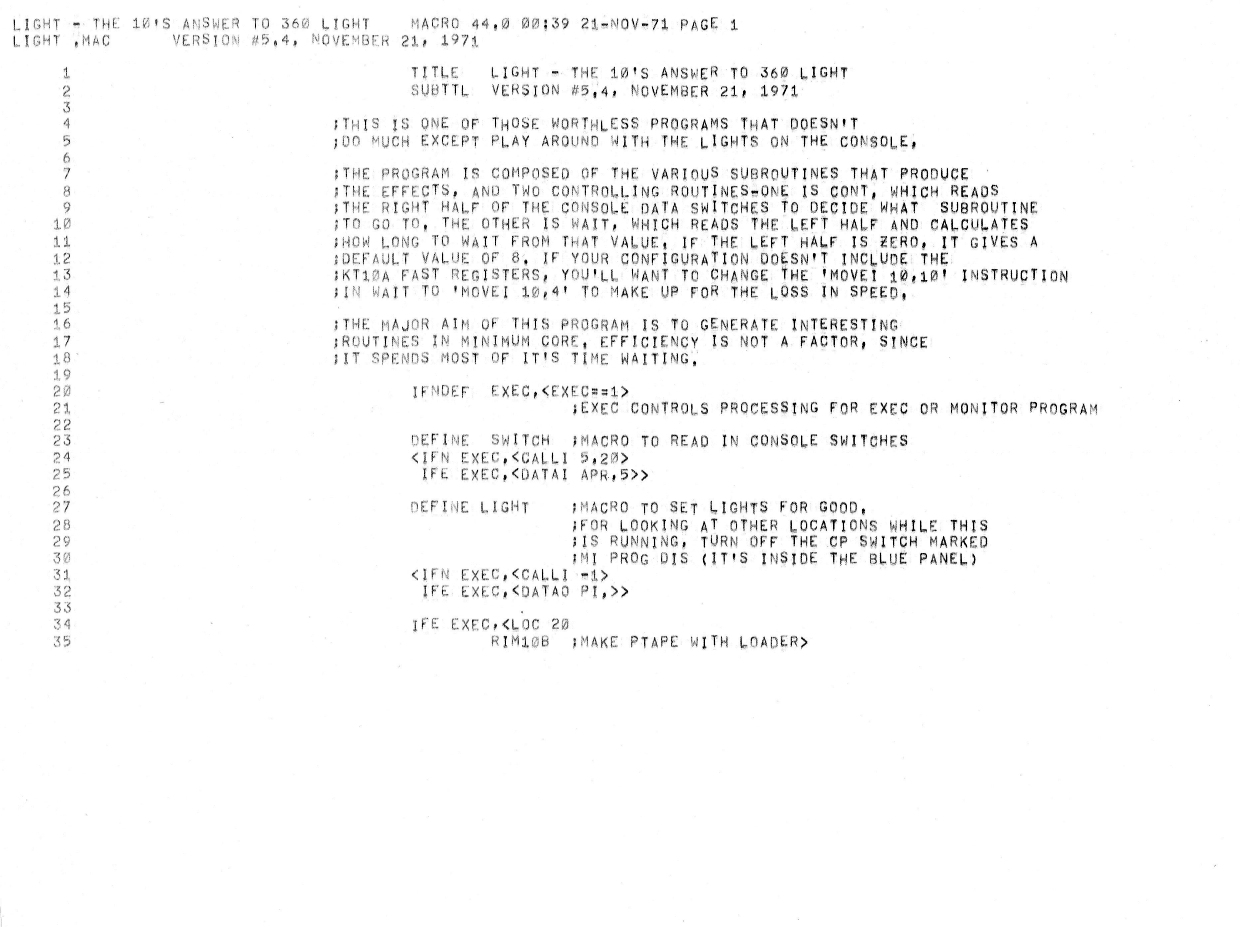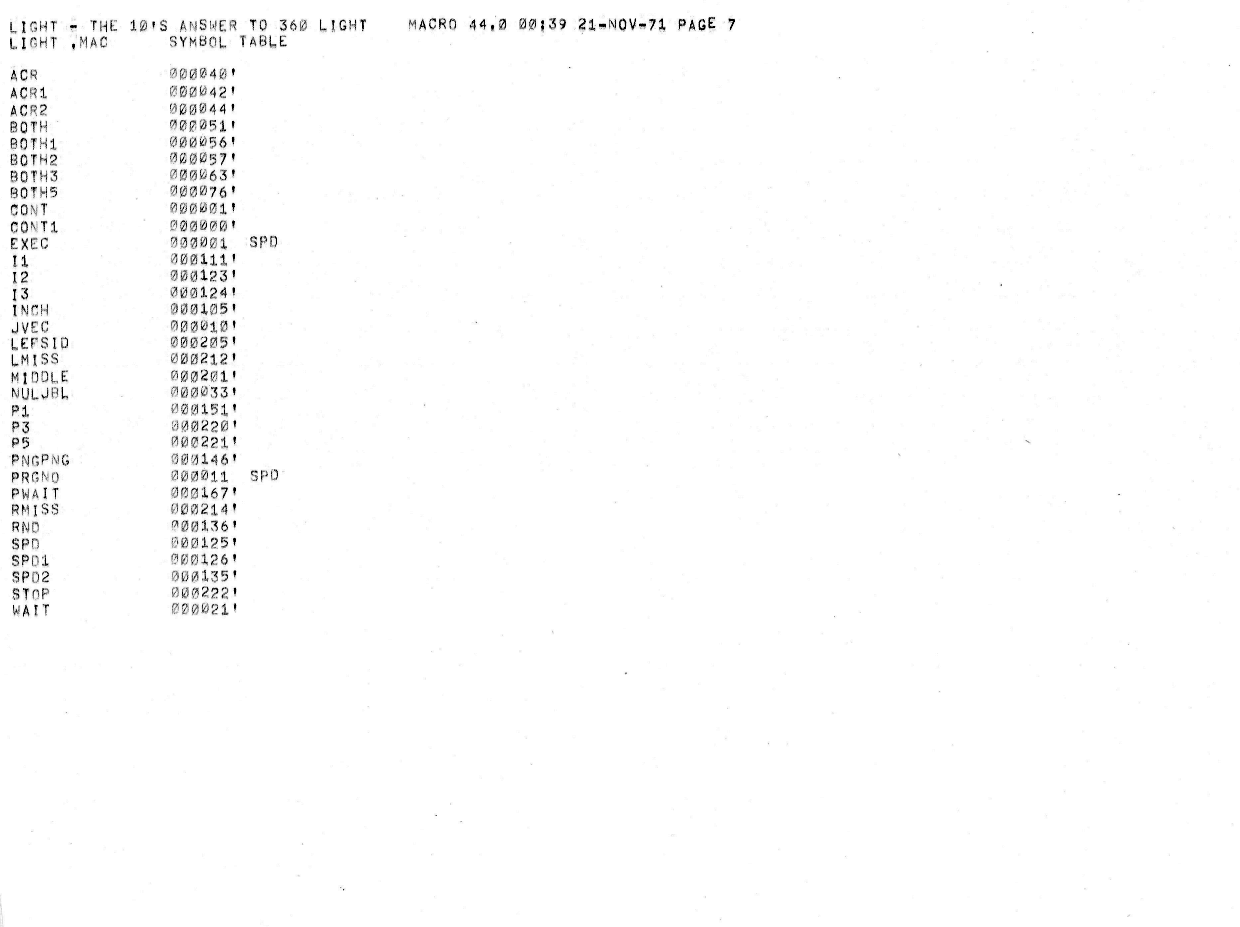
When I was a sophomore at Carnegie-Mellon Univ, I got a student job as a parttime operator for the Computer Science Dept's first DEC PDP-10. I had hoped to land one on the Univac 1108 or the IBM 360/67, but had to settle for a grossly underpowered and brand new system. 48 KW of core (W is 36 bits plus parity), five DECtape drives, no disks!
It turned out to be one of the best career "decisions" I ever made. The -10 was really designed with assembler level programming in mind and had a rich collection medium strength instructions. I quickly discovered it was usable by two people at once - besides the system DECtape, a user could read from one DECtape and write to another and be pretty productive. Eventually the system grew into a proper machine with swapping drums, disk drives, and a connection to the ARPAnet. It remains my all-time favorite computer, a feeling shared by many others lucky enough to have used PDP-10s. For various reasons, there will never be another computer worthy enough to equal our fond thoughts for the -10.
A few people moved to CMU from Stanford and one mentioned that their PDP-10 had a more interesting "null job" than DEC's "AOJA 0, 1" loop that counted as fast as the machine could in accumulator zero, which was usually displayed in the console lights. So I wrote a program that ran the Stanford null job and quickly expanded it to several different displays.
In my freshman year, I quickly discovered I was a born programmer, and the 1108 soon kidnapped me and shared me with the 360 (and even the Bendix G-21, the system the PDP-10 displaced). I had written a little 1108 assembler code, but nothing on the scale of this 224 (octal) word program. Looking through the code, it's really pretty good for the day. It has comments and blank lines (Prof. Bill Wulf liked to claim that the best comment is often a blank line). It doesn't use a stack, at the time, neither did Fortran and the -10 had just about every call mechanism imaginable. I don't have symbolic names for the accumulators, but even DEC OS code didn't have the final naming that was used in the massive renaming subproject for release 5 of the "monitor" and renamed TOPS-10. The main thing it lacks are comments before each display to describe what they really do. That might be because it would take a page of comments to describe the core three instructions of the Stanford null job!
The listing dates from 1971. My mental math must be wrong, it can't possibly be more than a half century ago. Yikes!









Contact Ric Werme or return to his home page.
Written 2022 Oct 31, last updated 2022 Oct 31.